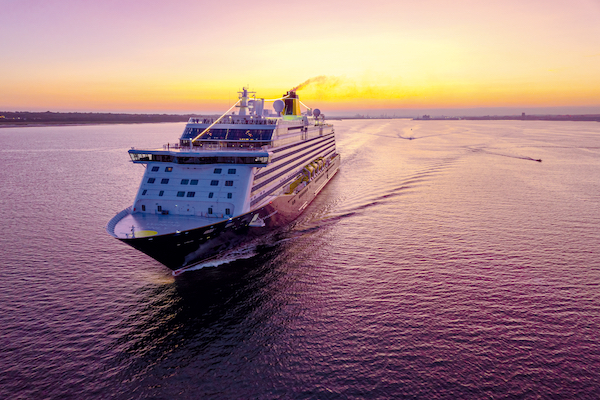Saga, a company renowned for catering to the over-50s market, is currently investigating a strategic partnership arrangement within its cruise division. With an intention to optimise its position in this crowded sector, Saga aims to explore various partnership opportunities for its ocean cruise arm.
The motive behind this exploration is to move towards a capital-light business model, aligning with its ongoing strategy to enhance operational efficiency and shareholder value. This initiative comes in response to reports suggesting potential actions like selling stakes or vessels to release capital. Saga’s cruise ships, Spirit of Adventure and Spirit of Discovery, are at the centre of this discussion.
Strategic Shift in Cruise Operations
Saga is actively considering a partnership strategy for its ocean cruise operation, highlighting a significant strategic shift. This decision is aimed at boosting its operational and strategic position amidst increasing demand for its boutique ocean cruises. The firm acknowledges that these operations are nearing full capacity, reinforcing the need for strategic reallocation of resources.
The exploration of partnerships is consistent with Saga’s broader strategy to transition to a capital-light business model. This approach aims to crystallise value, reduce debt, and enhance long-term returns for shareholders. The idea is to leverage partnerships to optimise existing operations while maintaining a commitment to offering best-in-class services to its customers.
Potential Partnership Models
Various partnership models are on the table as Saga explores avenues to release capital from its cruise division. Possibilities include selling stakes in the cruise operation or even offloading certain assets to external partners under licensing agreements.
These options resonate with the firm’s intention to optimise resources without sacrificing service quality or operational efficiency. By potentially selling stakes or entire assets, Saga aims to raise funds that could be redirected towards strengthening its other business segments.
Reactions to the News
The announcement has piqued the interest of industry stakeholders and market analysts. In a recent statement, Saga reassured that no final decision has been made yet, emphasising ongoing discussions.
This strategic exploration has been perceived as a pragmatic approach to addressing financial goals. It reflects the evolving landscape where companies are increasingly looking at partnerships to sustain growth and competitiveness.
The Role of Advisors
Saga is reportedly engaging with advisors to explore a range of options for its cruise division. These advisors play a critical role in evaluating potential partnership opportunities and determining the best strategic fit for Saga’s goals.
Their insights are crucial in guiding Saga through complex financial and operational considerations, ensuring that any potential deal aligns with the company’s long-term objectives.
Current Market Dynamics
Observers note that such strategic collaborations could propel Saga towards new opportunities, leveraging shared resources for mutual benefit. The firm’s emphasis on maintaining service quality while exploring innovative financial structures is central to its strategy.
Partnerships in the cruise industry are not uncommon, often leading to enhanced operational capabilities and expanded market presence. With the right partner, Saga could enhance its offerings and achieve a stronger financial footing.
Anticipated Outcomes
If successful, a partnership could transform Saga’s cruise operations, creating a sustainable and scalable model for future growth. It could also balance risk and reward, potentially unlocking significant value.
By reducing capital expenditure and enhancing strategic flexibility, Saga expects to achieve improved financial performance. Such an arrangement might support long-term growth objectives and strengthen shareholder confidence.
Saga’s commitment to communication remains strong, promising stakeholders timely updates as discussions advance. Transparency throughout the process will ensure confidence and clarity among investors and partners.
Conclusion
Saga’s strategic exploration of partnership opportunities within its cruise division underscores its commitment to sustainable business practices and long-term growth.
As the company navigates these potential partnerships, its dedication to quality service remains steadfast, ensuring that any strategic move aligns with its customer-focused values.
Saga’s exploration into partnership opportunities represents a decisive step towards achieving its strategic goals. By pursuing a capital-light model, the company seeks to enhance operational efficacy, reduce financial burdens, and secure its position as a leading provider in the cruise industry. This initiative not only aims to liberate capital but also reinforces Saga’s commitment to delivering exceptional travel experiences while ensuring sustained shareholder value.

